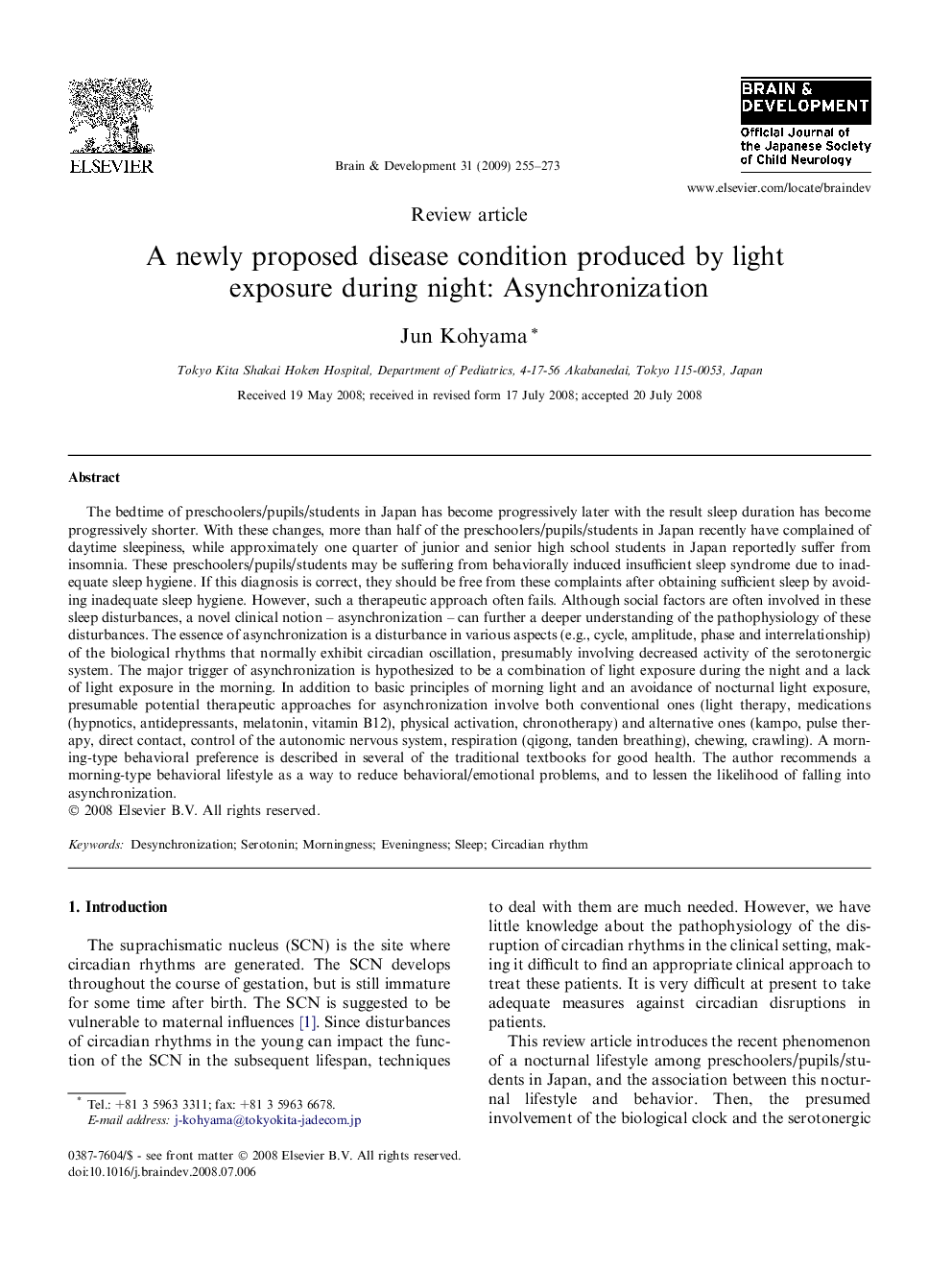| کد مقاله | کد نشریه | سال انتشار | مقاله انگلیسی | نسخه تمام متن |
|---|---|---|---|---|
| 3038125 | 1184448 | 2009 | 19 صفحه PDF | دانلود رایگان |

The bedtime of preschoolers/pupils/students in Japan has become progressively later with the result sleep duration has become progressively shorter. With these changes, more than half of the preschoolers/pupils/students in Japan recently have complained of daytime sleepiness, while approximately one quarter of junior and senior high school students in Japan reportedly suffer from insomnia. These preschoolers/pupils/students may be suffering from behaviorally induced insufficient sleep syndrome due to inadequate sleep hygiene. If this diagnosis is correct, they should be free from these complaints after obtaining sufficient sleep by avoiding inadequate sleep hygiene. However, such a therapeutic approach often fails. Although social factors are often involved in these sleep disturbances, a novel clinical notion – asynchronization – can further a deeper understanding of the pathophysiology of these disturbances. The essence of asynchronization is a disturbance in various aspects (e.g., cycle, amplitude, phase and interrelationship) of the biological rhythms that normally exhibit circadian oscillation, presumably involving decreased activity of the serotonergic system. The major trigger of asynchronization is hypothesized to be a combination of light exposure during the night and a lack of light exposure in the morning. In addition to basic principles of morning light and an avoidance of nocturnal light exposure, presumable potential therapeutic approaches for asynchronization involve both conventional ones (light therapy, medications (hypnotics, antidepressants, melatonin, vitamin B12), physical activation, chronotherapy) and alternative ones (kampo, pulse therapy, direct contact, control of the autonomic nervous system, respiration (qigong, tanden breathing), chewing, crawling). A morning-type behavioral preference is described in several of the traditional textbooks for good health. The author recommends a morning-type behavioral lifestyle as a way to reduce behavioral/emotional problems, and to lessen the likelihood of falling into asynchronization.
Journal: Brain and Development - Volume 31, Issue 4, April 2009, Pages 255–273